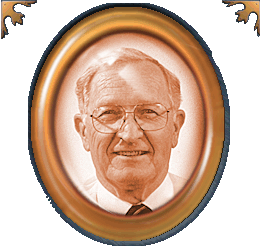Erickson: Would you explain a little about that process…You were hired by the University of California but specifically to the Agricultural Experiment Station. Is that correct?
Thomason: It was quite different. In fact, in a sense, they were quite separate organizations. That is, you had here the Citrus Experiment Station that had been in existence since 1907 and was perfectly capable and did operate primarily as an independent institution. And I was hired into the Department of Plant Pathology, and I specifically was housed in the so-called temporary building-one of those buildings brought in from March Air Force Base that sits right behind University Club. The rest of the Plant Pathology Department was in what would be the west wing of what is now the Gary Anderson School of Business Administration. That was a research building at that time. At that particular time, Dr. Batchelor was still the Director of the Experiment Station, and it was not uncommon for us to gather on one of the porches. Dr. Boyce and others (myself) and have a bag lunch there, kind of a rural scene I would say. Another thing not uncommon is that they would have a volleyball court down below by the Entomology greenhouses and a large group that gathered to play volley ball including Dr. Daniel Aldrich, who later became … and as you know stood about 6'4" and weighed about 240 lbs. and was a fierce competitor. So, one had to be careful not to get in his way.
(laughter)
Erickson He was quite athletic, wasn't he?
Thomason: Yes, he was quite athletic. No question about that. So, it was a relaxed atmosphere in a sense; but on the other hand, those that were in the Experiment Station had a responsibility throughout Southern California. I came to work specifically on vegetable and field crops, even though it was called the Citrus Experiment Station. Their assignment had broadened considerably. And for years, of course, they had worked on walnuts, citrus, and then avocados were coming on strong. And then, of course, Southern California was leading the state in the production of ornamental plants, so people were involved in that, too.
Erickson: Do you know when that started? When they branched out into vegetables and the other areas you were discussing?
Thomason: Well, I would say that some work, certainly work on walnuts and some of the other tree crops probably was going on right until World War II started. One has to remember that up to World War II, Los Angeles had the largest agriculture gross income of any county in the state. You know, we see it as a paved-over area, but up until 1945, it was the Number 1 agriculture county in the state, which made it one of the Number 1 agriculture counties in the nation.
